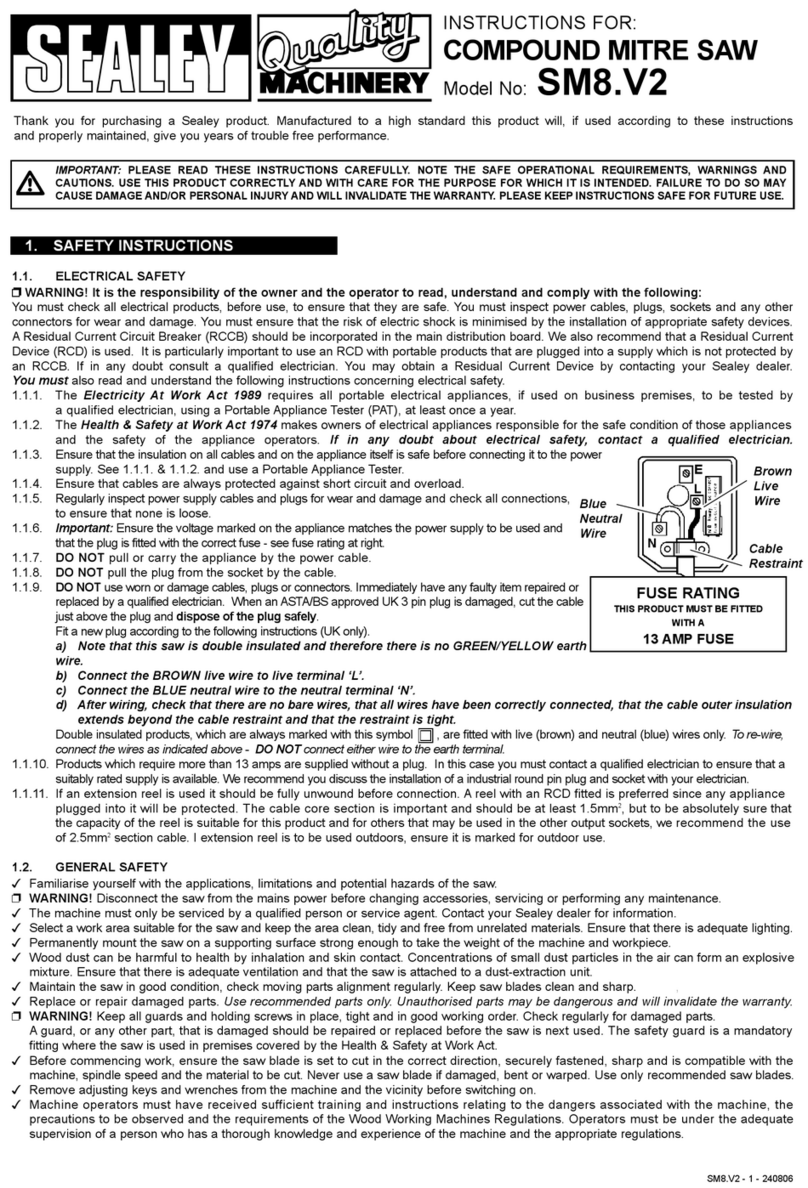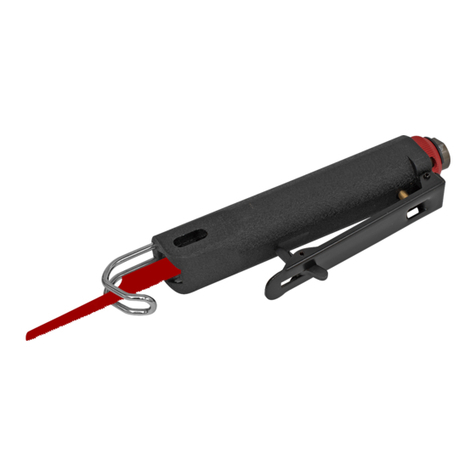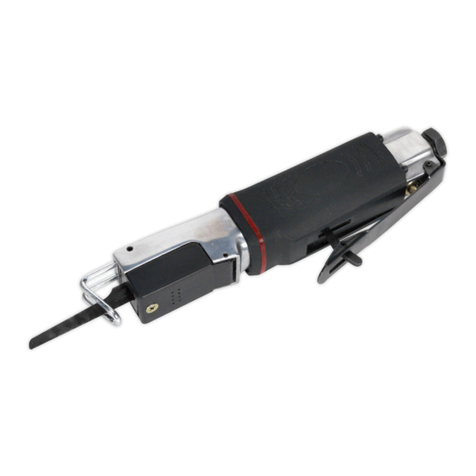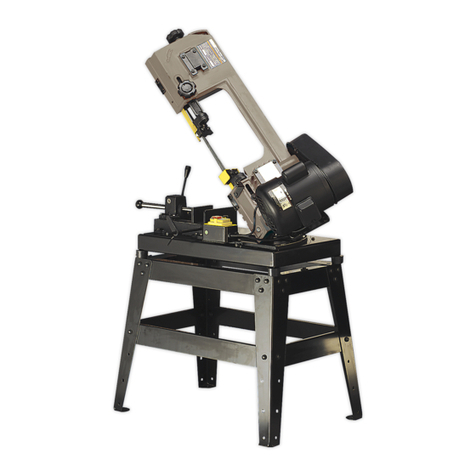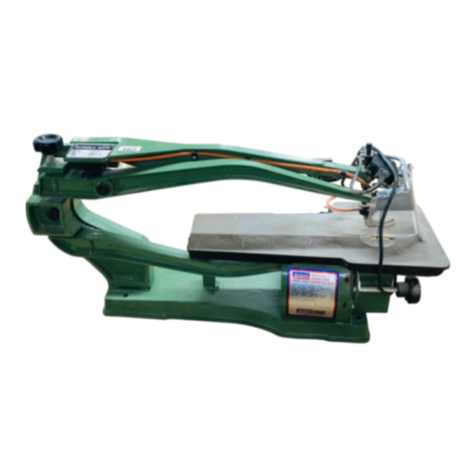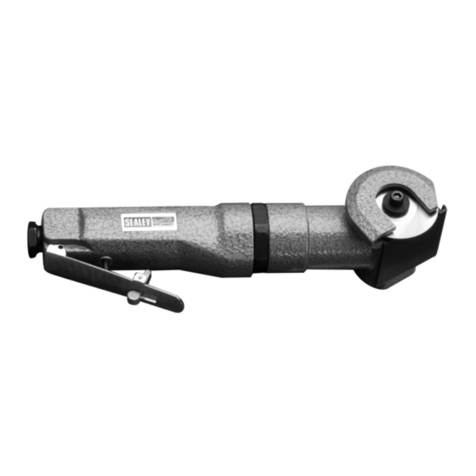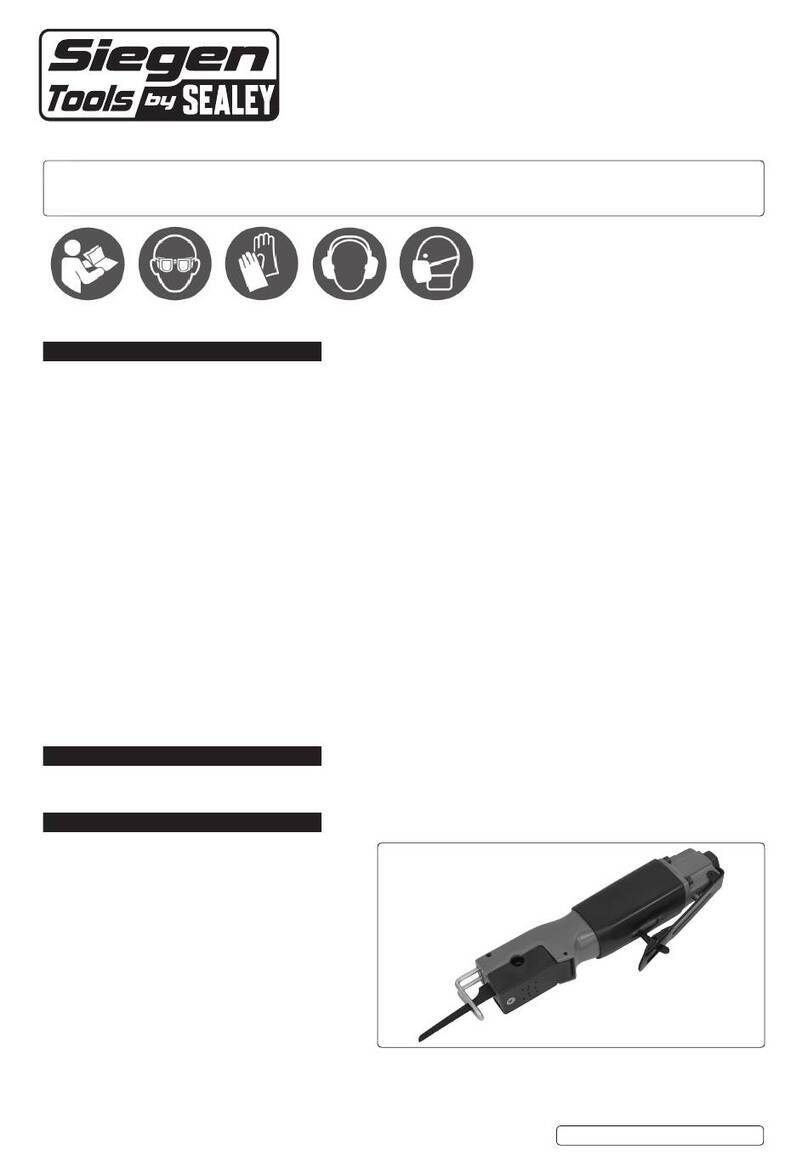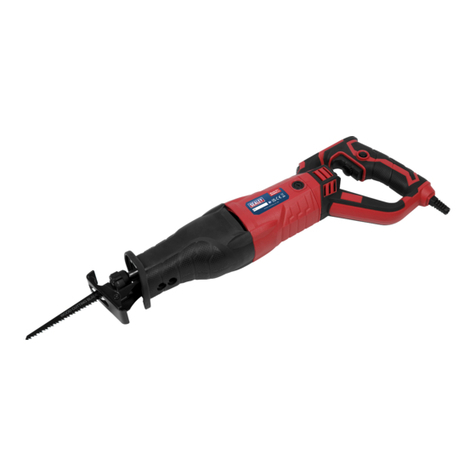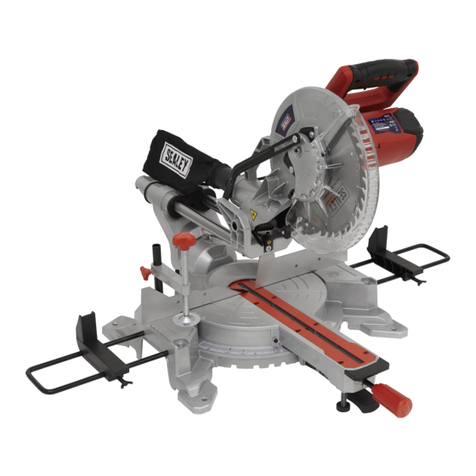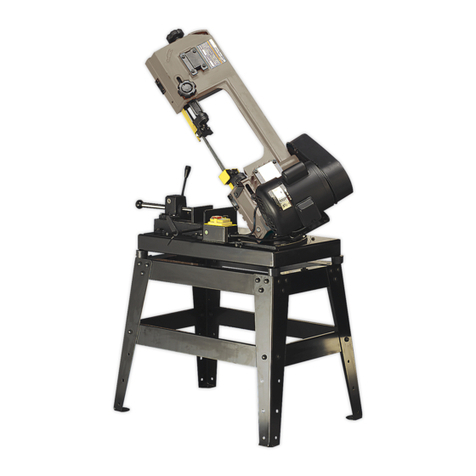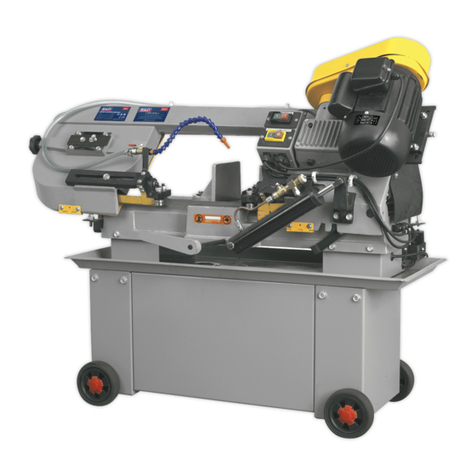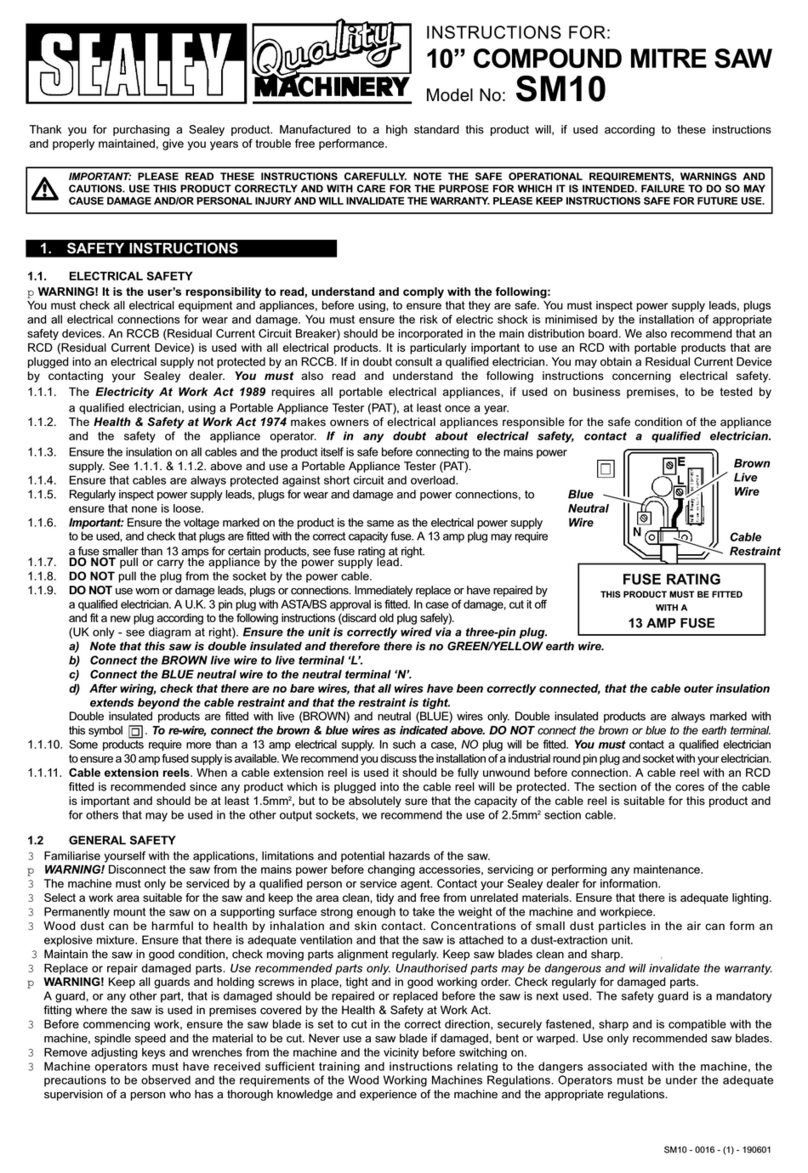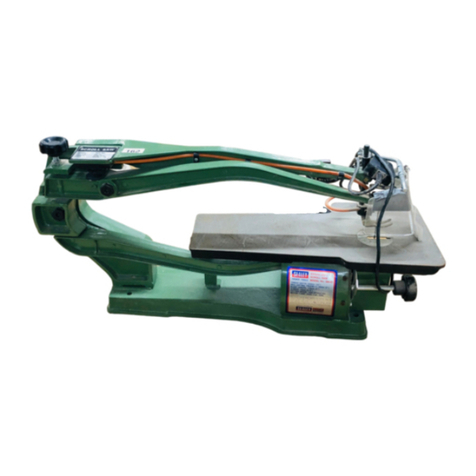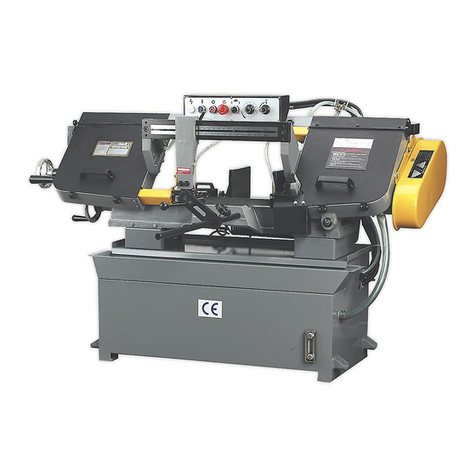
9Before commencing work, ensure that the saw blade is set to cut in the correct direction, securely fastened, sharp and is compatible
with the machine, spindle speed and the material to be cut. Never use a saw blade if damaged, bent or warped. Use only
recommended saw blades.
9Remove adjusting keys and wrenches from the machine and the vicinity before switching on.
9Machine operators must have received sufficient training and instructions relating to the dangers associated with the machine, the
precautions to be observed and those requirements of the Wood Working Machines Regulations which apply. Inexperienced
operators must be under the adequate supervision of a person who has a thorough knowledge and experience of the machine and the
required guards.
8DO NOT operate the saw if any parts are damaged or missing as this may cause product failure and/or personal injury.
8DO NOT operate the saw when you are tired or under the influence of alcohol, drugs or intoxicating medication.
9When not in use, switch off the saw and unplug from the power supply.
WARNING! Wear approved safety eye protection, ear defenders and respiratory protection.
9Remove ill fitting clothing. Remove ties, watches, rings and other loose jewellery and contain long hair.
9Keep hands and body clear of the blade when operating the saw.
9Maintain correct balance and footing. Ensure the floor is not slippery and wear non-slip shoes.
9Keep children and unauthorised persons away from the work area.
9Avoid unintentional starting and never leave the saw operating unattended.
8DO NOT use the saw for a task it is not designed to perform and ensure that operators are trained to use the saw.
8DO NOT get the saw wet or use in damp or wet locations or areas where there is condensation.
8DO NOT use the saw where there are flammable liquids, solids or gases such as paint solvents and including waste cleaning rags etc.
9Connect to a suitable extraction system. Failure to do so will result in the build-up of sawdust which will become a fire hazard.
9Keep riving knife and blade guard in place and operational, and replace table insert when worn.
9Ensure that the saw blade is suitable for the material to be cut.
WARNING! Before each use, check that the saw blade is secure and not worn or damaged.
9Make sure that the saw table is clear of tools, waste wood etc. before starting the saw.
9Make sure that the blade is not touching the guard, riving knife or workpiece before starting the saw.
9Use the blade guard for all “through-sawing” operations. Through-sawing operations are those where the blade cuts through the
workpiece completely as in ripping or cross-cutting.
9Check workpiece to ensure that there are no nails or other items which may foul the saw blade.
9Hold the work firmly against the fence bar.
9Only feed the workpiece into the blade against the rotation of the blade.
9Avoid subjecting the saw blade to excessive strain - never force the workpiece. Maintain a controlled, steady progression.
9Should the saw blade jam, switch the power off immediately to prevent damage to the motor.
9To avoid “kickback” (when a workpiece is violently thrown back towards the operator) implement the following:
a) Keep the blade sharp.
b) Keep the fence parallel to the saw blade.
c) DO NOT release the workpiece before it is pushed all the way past the saw blade.
d) DO NOT rip work that is twisted or warped or does not have a straight edge to guide along the fence.
9Use a push stick for ripping narrow workpieces.
9Provide adequate support to the rear and sides of the saw table for long or wide workpieces.
8DO NOT use your hands alone (“free-hand”) to guide the workpiece. Hold work firmly against the fence bar to guide work through the saw.
8DO NOT place yourself in an awkward operating position where a slip could cause your hand to move into the blade.
8DO NOT stand, or have any part of your body, in line with the path of the saw blade.
8DO NOT use the fence as a cut-off gauge when cross-cutting.
8DO NOT hold what will become the off-cut (the waste part of the workpiece).
8DO NOT attempt to cut more than one workpiece, stacked vertically or horizontally.
8DO NOT attempt to remove waste material whilst the saw is running.
WARNING! DO NOT reach behind or over the saw blade.
WARNING! DO NOT attempt to free a jammed saw blade without first switching off and removing the plug from the electric power supply.
8DO NOT cut metals or substances that may produce toxic dust. Saw must only be used to cut wood or wood derived materials.
8DO NOT attempt to cut round section wood.
8DO NOT use solvents to clean plastic parts. Use a soft damp cloth only.
9Store saw and blades in a safe, dry childproof location.
1.3. GUARDING RELATED WARNINGS
1.3.1. Keep guards in place. Guards must be in working order and be properly mounted. A guard that is loose, damaged, or is not functioning
correctly must be repaired or replaced.
1.3.2. Always use saw blade guard and riving knife for every through–cutting operation. For through-cutting operations where the saw blade
cuts completely through the thickness of the workpiece, the guard and other safety devices help reduce the risk of injury.
1.3.3. Immediately reattach the guarding system after completing an operation which requires removal of the guard and riving knife. The
guard and riving knife help to reduce the risk of injury.
1.3.4. Make sure the saw blade is not contacting the guard, riving knife or the workpiece before the switch is turned on. Inadvertent contact
of these items with the saw blade could cause a hazardous condition.
1.3.5. Adjust the riving knife as described in this instruction manual. Incorrect spacing, positioning and alignment can make the riving knife
ineectiveinreducingthelikelihoodofkickback.
1.3.6. Fortherivingknifetowork,itmustbeengagedintheworkpiece.Therivingknifeisineectivewhencuttingworkpiecesthataretoo
short to be engaged with the riving knife. Under these conditions a kickback cannot be prevented by the riving knife.
1.3.7. Use the appropriate saw blade for the riving knife. For the riving knife to function properly, the saw blade diameter must match the
appropriate riving knife and the body of the saw blade must be thinner than the thickness of the riving knife and the cutting width of the
saw blade must be wider than the thickness of the riving knife.
1.4. CUTTING PROCEDURES WARNINGS
▲DANGER:Neverplaceyourngersorhandsinthevicinityorinlinewiththesawblade.Amomentofinattentionoraslipcoulddirect
your hand towards the saw blade and result in serious personal injury.
Original Language Version
© Jack Sealey Limited TS10P.V2 Issue: 1 12/11/2020
